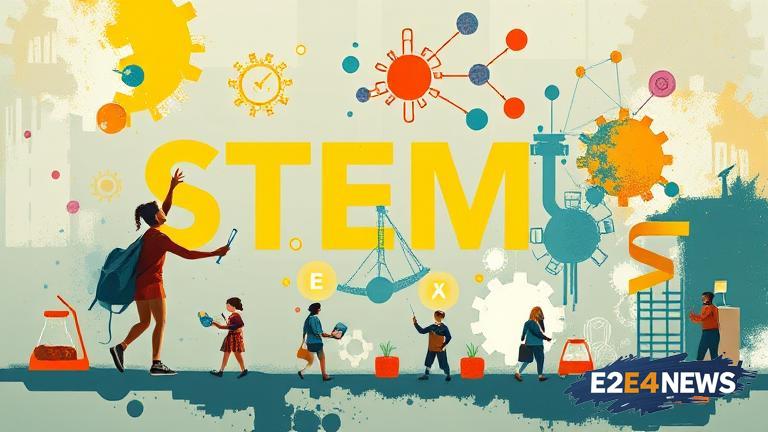The world of STEM education is undergoing a significant transformation, driven by innovative approaches and cutting-edge technologies. In recent years, there has been a growing recognition of the need to make STEM learning more engaging, interactive, and effective. One of the key trends in this area is the use of gamification, which involves the use of game design and mechanics to enhance the learning experience. This approach has been shown to increase student motivation and participation, particularly in subjects such as math and science. Another innovative approach is the use of virtual and augmented reality, which provides students with immersive and interactive learning experiences. These technologies have the potential to revolutionize the way we teach and learn STEM subjects, making them more accessible and enjoyable for students of all ages. Furthermore, the use of artificial intelligence and machine learning is also being explored in STEM education, with the potential to personalize learning and provide real-time feedback to students. In addition to these technological advancements, there is also a growing focus on interdisciplinary approaches to STEM education, which involve combining multiple subjects to provide a more holistic learning experience. This approach recognizes that STEM subjects are often interconnected and that students need to develop a range of skills, including critical thinking, problem-solving, and collaboration. Moreover, there is a growing recognition of the importance of diversity and inclusion in STEM education, with a focus on providing opportunities and support for underrepresented groups. This includes initiatives such as mentorship programs, scholarships, and outreach activities, which aim to promote diversity and inclusion in STEM fields. The benefits of innovative STEM education approaches are numerous, including improved student outcomes, increased motivation and engagement, and better preparation for the workforce. Moreover, these approaches can also help to address the shortage of skilled STEM professionals, which is a major concern for many industries and economies. To achieve these benefits, educators and policymakers must work together to develop and implement effective STEM education strategies, which take into account the latest research and trends in the field. This includes providing professional development opportunities for teachers, investing in educational technologies, and promoting partnerships between schools, universities, and industry. By working together, we can create a more innovative and effective STEM education system, which prepares students for success in the 21st century. The future of STEM education is exciting and full of possibilities, with the potential to transform the way we learn and work. As technology continues to evolve and advance, we can expect to see even more innovative approaches to STEM education, which will help to drive progress and innovation in a range of fields. In conclusion, the innovative approaches to STEM education are revolutionizing the way we learn and teach, providing students with engaging, interactive, and effective learning experiences. These approaches have the potential to transform the STEM education landscape, providing students with the skills and knowledge they need to succeed in the 21st century. With the continued development and implementation of these approaches, we can expect to see significant improvements in student outcomes, as well as a more diverse and inclusive STEM workforce. The impact of these approaches will be felt for generations to come, shaping the future of STEM education and beyond. The use of technology, such as online platforms and educational software, is also becoming increasingly popular in STEM education, providing students with access to a range of learning resources and tools. Additionally, the incorporation of real-world examples and case studies into STEM education is helping to make learning more relevant and applicable, preparing students for the challenges and opportunities of the real world. Overall, the future of STEM education is bright, with a range of innovative approaches and technologies available to support teaching and learning. By embracing these approaches and working together, we can create a more effective and innovative STEM education system, which prepares students for success in the 21st century.





